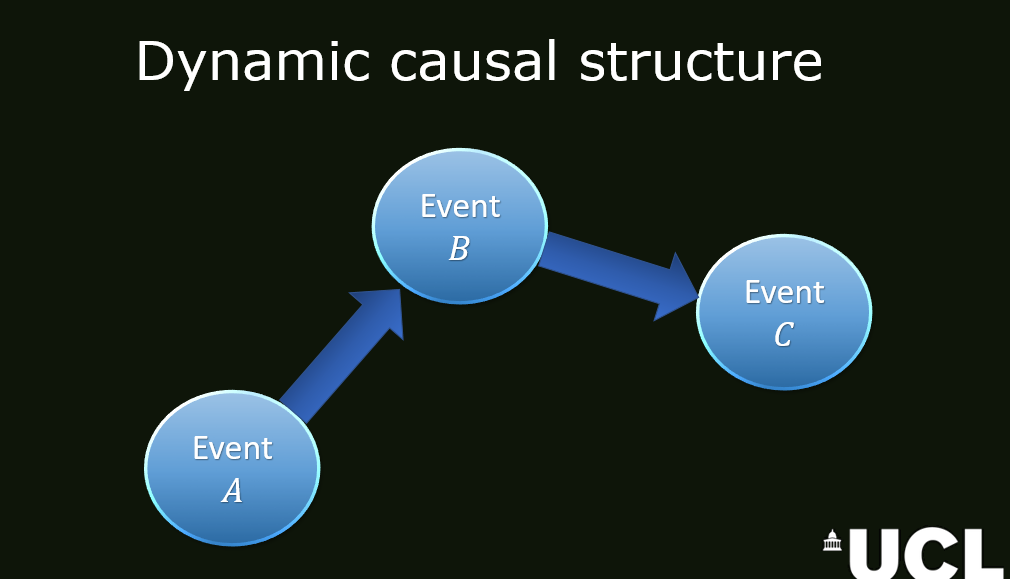There are always exciting things happening around UCL. This time around, a bunch of lovely people decided to organise a departmental festival, which they christened PandA (Physics and Astronomy). They day was full of fun science displays, music, talks, and even a play written and performed by the students!
My contribution was a 10-minute talk titled “A trip through causality in physical theories”. The talk stems from my interest in the research on indefinite causal orders in quantum theory, which I wrote a literature review on back in 2015 when I was studying towards an MRes in quantum technologies. If you fancy a read, you can download it here:
In my talk, which uses the first part of the literature review, I introduce two different causal structures, fixed and dynamic. A fixed causal structure requires the physicist who uses the theory to manually decide the causal order for the objects in question. The two theories where this is the case are Newtonian mechanics and quantum mechanics, for which the mathematical structure does not yield any insight into the causal structure. As a simple example, take the well-known equation F = ma, which encodes Newton’s second law. Firstly, we must manually decide a direction of time, and we must also manually decide whether the force causes the acceleration, or whether the acceleration causes the force.
Theories with dynamical causal structure, on the other hand, do not require any decision on the physicist’s part, they instead return the causal order given the specific spacetime coordinates for each event. Special relativity and general relativity have this notion at their core, and the same requirement can be included into quantum field theory by including anti-particles (when I first learned this, I thought it was amazing! Not only are anti-particles needed because of Dirac’s original problem, but they can be included to solve a very fundamental issue, namely causality!).
Why then are we interested in studying causality? There is a fundamental problem that can be spotted from these above paragraphs. Quantum mechanics has a fixed causal structure, while general relativity has a dynamic causal structure. If we wish to formulate a theory of quantum gravity, we would prefer this to have a dynamic causal structure, because this appears to be the more fundamental feature (it shouldn’t be up to the physicist in question to decide the order of events). The difference between causal structures for quantum mechanics and general relativity adds to the difficulty in finding a consistent theory of quantum gravity (while a quantum field theory approach does incorporate this feature, it has thus far not been successful).
As a result, some researchers think that approaching causality in different ways might yield additional insight into how the causal structure of quantum gravity should be treated. There are some really exciting ideas here, including Causal Dynamical Triangulation (proposed by Renate Loll), Causaloid theory (by Lucien Hardy), causally neutral theory of Bayesian inference (by Matthew Liefer and Robert Spekkens), Causal set theory (by David Malament and others), and indefinite causal orders (by Ognyan Oreshkov and others). There might be many more theories and people working on them that I failed to include here, this is by no means an exhaustive list.
i had a lot of fun presenting this talk, and am looking forwards to learning about (and maybe one day working on) some of these theories. And I look forwards to more PandA days!

